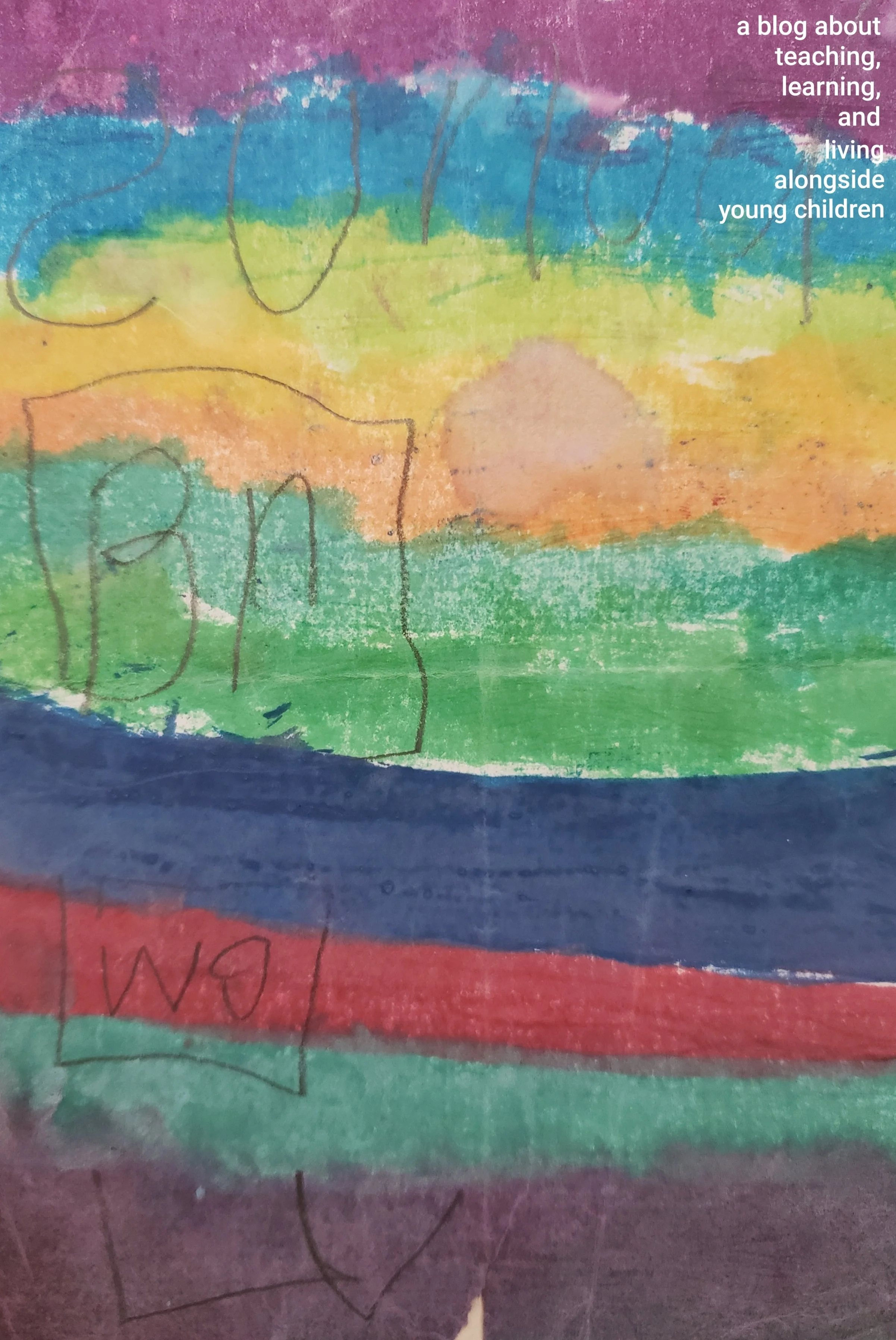Ask NML: Resolving Back-and-Forth Conflicts Between Preschoolers
/Illustration by M., Age 3
Ask NML is an exercise in thinking reflectively about real situations that arise when living alongside young children. But hey, every family or classroom situation is unique in ways that can’t be accounted for in a simple question or a 500-word answer. This article should be viewed as an example of reflective thinking about teaching, learning, and living alongside young children.
Submit questions about teaching, parenting, or living alongside young children here.
Q:
I’m a teacher in a class of 20 four- and five-year-olds. When problem-solving between two children becomes a back and forth, how do you to put an end to it?
A:
This is a great question because it’s one that requires us to look at our motivations in the moment, a.k.a. the hard thing to do that we only learn by intentional practice. So, for you as the teacher, what is the reason you are intervening in the conflict? The short term goals are usually something like: to keep it from getting physical, to stop the yelling from disrupting the entire classroom, to perhaps return the children to the work you had *hoped* would turn out a certain way. I’ll pause here and say that the best thing to keep in mind is that this is the learning - the main, vital, critical thing the children need to learn how to do - be in the world with others. Keeping this goal in mind allows you to relax and really listen to the children without judging yourself because your magical lesson/provocation didn’t entice them enough to keep them from fighting. So, that being said, you don’t really have to “put an end to it” so much as facilitate the conversation. What a relief!
Getting back to when the children are stuck in the dreaded “I was holding it,” “You walked away,” “I was holding it,” “You walked away” loop, try to think of the long-term reason you are intervening in the conflict -- to help them learn to self-regulate, communicate, and think critically enough to solve the problem. You probably also, in the larger view, want to encourage the creation of a world where everyone feels heard, understood, and invested in the outcome of their interactions. So that means we have to judge, as adults, where the children are communicating information that is genuinely important to them (even if it’s not to us) versus being truly stuck. When the children are stuck in the back and forth, we have to remember that it is genuine for them. The emotions are real, even when the logic doesn’t make sense, isn’t fair, or changes on a dime. The “stuck” comes from the emotions becoming bigger than the actual event -- this is a challenge for adults, too. So, in this case, the learning becomes less about communicating what happened than having to deal with the terrible reality that people sometimes never agree to see things in the same way -- and we have to go on anyway.
The children, in this case, need facilitation to move through their emotions and practice being resilient and moving on. We can do this by validating the emotionally inflected perspectives of the children and modeling a way of thinking things through. “You really know you were holding that. And you really know you were coming back to that. What will we do now? What will be the next plan?”
Sometimes, the children will debate a loooong time. Sometimes, they will make an agreement that will shock you and feel unfair to your adult sense of right and wrong, but as long as it’s clear between them, we have to remove our judgment and let them go on. Sometimes, you’ll be stuck talking for so long that they might say, “I don’t want it anymore,” and you’ll have to decide which battles to fight with the individual goals of that child. It’s a practice. The good/bad news is that we’ll get to do it all again very soon.


